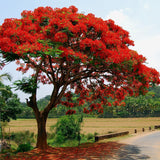ECHINACEA purpurea (Purple Coneflower)
ECHINACEA purpurea (Purple Coneflower) is a well-known and widely cultivated perennial flowering plant. It is native to eastern and central North America and is highly valued for its attractive flowers and potential medicinal properties.
Appearance: Purple Coneflower typically grows to a height of 2 to 5 feet (60 to 150 centimeters). It has sturdy, hairy stems and lance-shaped leaves that are rough to the touch. The flowers are large, daisy-like, and have prominent cone-shaped centers. The petals are usually pink to purple, but cultivars with white, yellow, or orange flowers are also available.
Blooming period: This species blooms from mid-summer to early fall, usually from June to August. The flowers are attractive to bees, butterflies, and other pollinators.
Habitat and cultivation: Echinacea purpurea is adaptable to various soil types but prefers well-drained soil. It thrives in full sun but can tolerate partial shade. It is commonly found in prairies, open woodlands, and along roadsides. In cultivation, it is relatively easy to grow and is often used in gardens, naturalized areas, and as a cut flower.
Garden and landscape use: Purple Coneflower is a popular choice for butterfly gardens, pollinator gardens, and native plant gardens. Its showy flowers add vibrant colors and attract beneficial insects. It can be planted en masse or combined with other perennials in mixed borders. Additionally, the dried seed heads of Echinacea purpurea can provide winter interest in the garden.
Medicinal and herbal uses: Echinacea purpurea has a long history of use in traditional herbal medicine, particularly for its potential immune-stimulating properties. Its roots, flowers, and sometimes leaves are used to make herbal remedies, tinctures, teas, and dietary supplements. However, it's important to note that the scientific evidence regarding its efficacy and safety is still being studied, and it's best to consult with a healthcare professional before using herbal remedies.
| Number of Seeds | Max Coverage Area (Square Ft.) | |
|---|---|---|
| 1OZ | 6,875 | 250 |
| 1/4LB | 27,500 | 1,000 |
| 1/2LB | 55,000 | 2,000 |
| 1LB | 110,000 | 4,000 |
| 5LB | 550,000 | 20,000 |
Scientific Name: Echinacea Purpurea
Common Name: Purple Coneflower
Plant Type: Perennials
Family: Echinacea-Coneflowers
Native Range: Eastern United States
Full Growth Height: 2-3 ft
Spread: 1-2 ft
Zone: 3 to 8
Exposure: Full Sun, Partial Sun
Blooming Season: Spring (Mid, Late), Summer (Early, Mid, Late)
Attracts: Birds, Butterflies
Flower: Showy, Cut Flowers
Flower Color: Purple Petals with Dark Brown Central Disk
Resistant: Drought, Deer, Clay Soil, Dry Soil, Rocky Soil
Water Requirement: Low, Moderate
Soil Type: Well-drained, Chalk, Loam, Sand
Soil pH: Alkaline, Neutral, Acid
Garden Uses: Cottage Prairies, Meadows, Informal Gardens, Borders
















